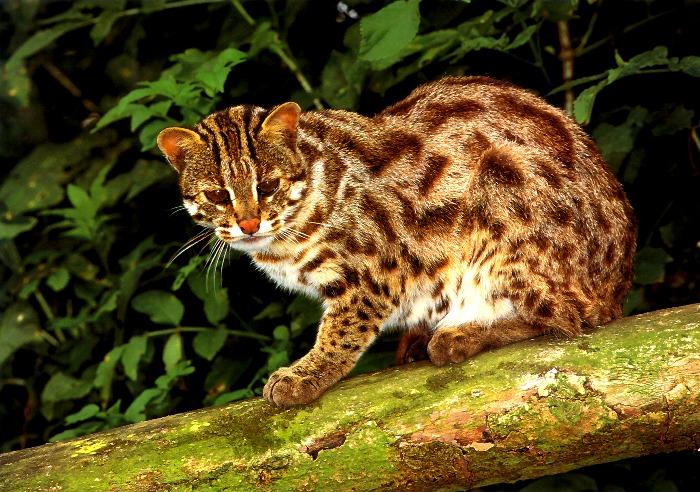|
| Query: black cat | Result: 92nd of 674 | |
Asian Leopard Cat (Prionailurus bengalensis) <!--삵(살쾡이)-->
| Subject: | Asian Leopard Cat (Prionailurus bengalensis)
| |

| Resolution: 700x492
File Size: 94507 Bytes
Upload Date: 2004:11:18 13:14:50
|
ERROR : Server Busy(-1105)
ERROR : Server Busy(-1105)
Asian Leopard Cat (Prionailurus bengalensis)
From: Charles Perrien
Newsgroups: alt.binaries.pictures.animals
Subject: Wild Cats - p-wc77-leopardcat.jpg
Date: Wed, 18 Aug 1999 15:48:42 -0500
Leopard Cat (Prionailurus bengalensis) is a small wild cat of Southeast Asia. On average it is as large as a domestic cat, but there are considerable regional differences: in Indonesia the average size is 45 cm, plus 20 cm tail, while it is 60 cm/40 cm in the Amur region. The fur is also quite variable: it is yellow in the southern populations, but silver-grey in the northern ones. The chest and the lower part of the head are white. Leopard Cats bear black markings, that may be - dependent on the subspecies - spots or rosettes. It is a nocturnal animal, and usually eats rodents, birds, fish, reptiles, small mammals. It is usually a solitary animal except for the mating season. It has litters of 2 to 4 kittens and the gestation period can vary from 65 to 70 days.
|
Comments |
|---|
| | Kim |
|
| Hi there, is there any possibility I could use this beautiful image on my Bengal Cat website? Thanks for your consideration of my request :o) |
| | Guest |
|
Scientific Name: Prionailurus bengalensis (Kerr, 1792)
Synonyms: Felis bengalensis Kerr, 1792
Common Names:
English – Leopard Cat
French – Chat-léopard du Bengale, Chat de Chine
Spanish – Gato Bengalí, Gato de Bengala |
^o^
Animal Pictures Archive for smart phones
^o^
|
|
|